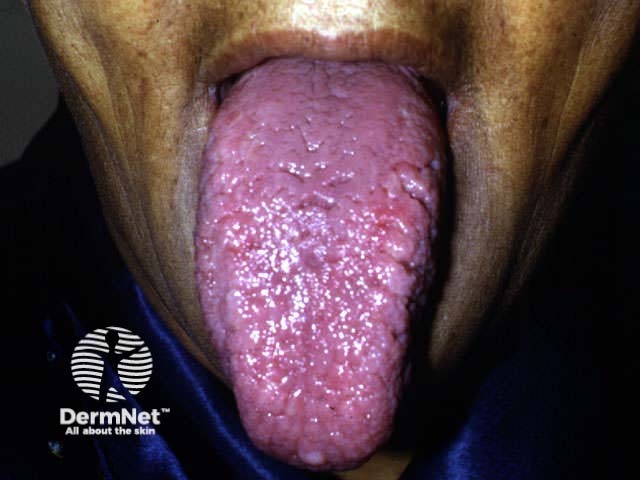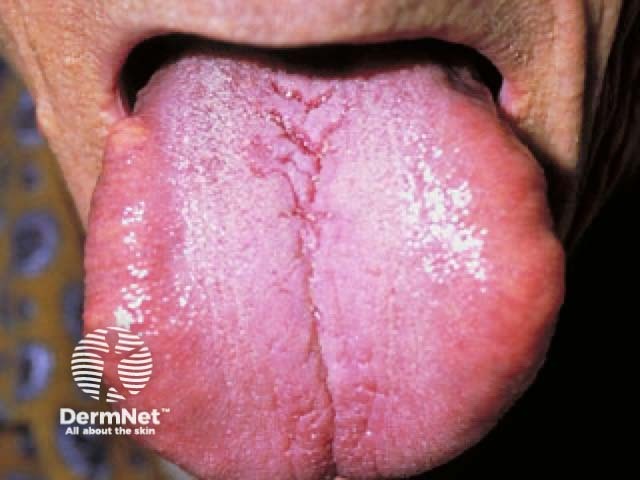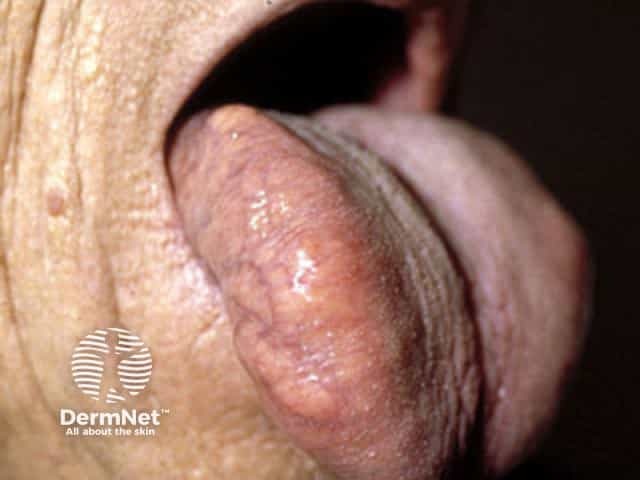Main menu
Common skin conditions

NEWS
Join DermNet PRO
Read more
Quick links
Author: Dr Cathlyna Saavedra, House Officer, Middlemore Hospital, Auckland, New Zealand. DermNet Editor in Chief: Adjunct A/Prof Amanda Oakley, Dermatologist, Hamilton, New Zealand. Copy edited by Gus Mitchell. April 2020.
Introduction Demographics Causes Clinical features Complications Diagnosis Differential diagnoses Treatment Outcome
Macroglossia is an abnormal enlargement of the tongue [1]. It is a clinical diagnosis defined as tongue protrusion beyond the teeth or alveolar ridge during resting posture. It can exist in isolation or in association with other conditions or syndromes [2].
It can be classified into two main categories [2]:

Macroglossia in systemic amyloidosis

Macroglossia in systemic amyloidosis

Macroglossia in systemic amyloidosis
Macroglossia is most often diagnosed in infants and children [1]. The prevalence of congenital macroglossia was reported to be fewer than 5 per 100,000 births, twice as common in females than males, and twice as common in African Americans compared to those of European ancestry [3].
True macroglossia can be congenital or acquired [1,2].
Conditions associated with congenital true macroglossia include [1,4]:
Acquired macroglossia is usually due to metabolic or inflammatory conditions, such as:
Relative macroglossia is commonly due to Down syndrome [5]. It can also occur because of tonsillar hypertrophy or a tumour which pushes the tongue forwards, or reduced oral cavity volume from a low palatal vault [2].
The cause of macroglossia is dependent on any underlying condition. For example:
The clinical features of macroglossia vary according to the underlying cause and can range from mild to severe [1].
Complications of macroglossia include:
Macroglossia is diagnosed clinically [1,2].
In utero, an ultrasound scan can detect macroglossia [6]. X-rays can be used to determine the size of the tongue when primarily used to measure the size of the head.
Diagnosis of any underlying condition is also important. Tests may include gene analysis, biopsy, or fine needle aspiration (FNA) [3].
The main differential diagnosis for true macroglossia is relative macroglossia.
Acute swelling of the tongue can be due to angioedema or a local inflammatory disorder that causes glossitis.
The treatment for macroglossia depends on the underlying cause. Congenital macroglossia can resolve as the child grows, as the tongue and oral cavity adapt to accommodate the larger tongue [1].
In general, treatment involves the following [2]:
The prognosis for patients with macroglossia is highly dependent on the severity, the underlying cause, and the success of treatment.